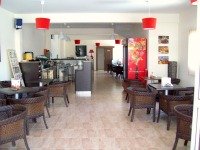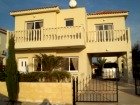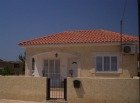How Home Insulation
Can Save Money
The Purpose of Insulation
Sometimes called lagging, insulation is to save energy whether it is electricity, gas or an alternative energy source.
A simple example is say, take ovens, the external casing is packed with a non combustible material and sometimes metal foil is used, the purpose of this is to keep the heat in the oven and keep the area around the oven cool.
A similar example would be a refrigerator but in this case the lagging of the external casing is there to keep the external hot air from affecting the internal temperature.
Without lagging in the two examples above the energy efficiency of these would be zero.
Expanding on the above and relating it to for example, a house. In northern Europe insulation of the walls, roof and floor are beneficial to fuel efficiency through stopping heat loss to the outside when the outside temperature is cold.
The insulation of the walls, if the house is built of brick is normally achieved by injecting high expansion foam or another high density material into the cavity between the inner and outer walls, or when the house is being built, using foam panels in the cavity between the walls.
Attic Insulation
This can be carried out in several ways, whether it is by using rolls of fibreglass or fibre panel between the ceiling joists. There are other materials that can be used; some are loose fibre blown into the spaces of the joists.
We now move onto the roof, first and foremost is to make sure that your external tiles, slates etc. are in good condition and fitted properly, leaking roofs and the consequences of it can be expensive to repair.
There are several methods of lagging the inner side of the external roof, spray insulation, using foil, panels, a material that looks like bubble warp covered with foil. Whatever method is used it is extremely important to ensure that your attic is ventilated; failing to do this can result in many problems.
Insulation to the floor depends on what type of floor you have, if it is a solid floor it may be made of composite materials which have energy efficient properties.
If it is a wooden floor it should be tongue and grooved which results in a firm floor with no drafts from the void beneath. With a wooden floor you can increase the efficiency by installing fibre panels between the floor joists.
Another area to consider is your windows. This may be achieved by using energy efficient windows, these are normally referred to as double glazed windows, you can also get triple glazed window units which consist of three panels of glass instead of two which as you can imagine are more energy efficient.
We live in Cyprus and are now seeing more houses being built with insulation. People may think “why" do you need insulation in a hot country”.
Remember we talked about refrigerators..., and air conditioners, these use more electricity than to heat.
Insulation helps reduce the energy used by the air conditioning to maintain the temperature at a comfortable level.
Traditionally the houses here were built of concrete and brick with tiled floors. In summer the walls heat up due to the sun and when the sun goes down... you can still feel the heat in the walls and that heat is transferred to the inside of the house.
As you can imagine the air conditioning units have to work overtime to bring the temperature down and maintain it. Not very helpful for fuel efficiency and with the worldwide costs for energy rising it's also becoming more expensive.
Because of the costs of energy, many home owners are looking at insulating their whole house. The most inexpensive way is to “over clad” the house.
This is basically using a lagging material and applying is on the outside of the property to stop or reduce any heat transfer to the inside and reducing their electricity bills.
I hope you found this insulation article helpful.
If you apply some of the above techniques, you will certainly save money on the ever increasing cost of home electricity.
Top of Purpose Insulation
Back to Energy Efficiency
Home Page
Best Links
Coffee Bar
Business for Sale in Cyprus

Agia Thekla Villa
Private Resale

Cyprus Bungalow for Sale

You Can Build a Travel Site Too!














